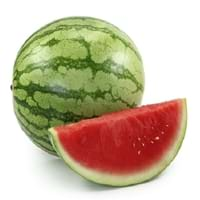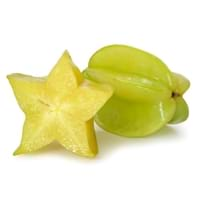Health Benefits
Anti-aging benefits, Anti-inflammatory properties, Asthma treatment, Body hydration, Cancer prevention, Digestive aid, Skin cleansing, Skin rejuvenation
Cancer prevention, Heat stroke treatment
General Benefits
Anti-inflammatory properties, Body hydration, Controls blood pressure, Digestive aid, Maintains healthy cholesterol level
Anti oxidant properties, Anti-inflammatory properties, Digestive aid, Maintains healthy cholesterol level, Treatment of sore eyes
Skin Benefits
Anti-aging benefits, Brightens and lightens complexion, Hydrates skin
Anti-aging benefits, Heals sunburn, Skin rejuvenation
Hair Benefits
Promotes longer and healthier hair, Regulates hair growth
Promotes longer and healthier hair, Protects hair
Allergy Symptoms
Breathing difficulty, Decrease in blood pressure, Dizziness, Eczema, Hives, Runny nose, Swelling of mouth, tongue or lips, Watery eyes
NA
Side Effects
Allergic reaction, Bloating, Diarrhoea, Indigestion, Intestinal gas, Nausea, Vomiting
Nausea, Vomiting
Best Time to Eat
As a snack in the late afternoon, Don't consume at night and before bed, Eat the fresh ones, avoid mixing with any other foods, don't eat after meal., Strictly avoid empty stomach
As a snack in the late afternoon, Eat the fresh ones, avoid mixing with any other foods, don't eat after meal., Strictly avoid empty stomach
Vitamin B5 (Pantothenic Acid)
Vitamin C (Ascorbic Acid)
Vitamin K (Phyllochinone)
Phytosterol
Not Available
Calories in Fresh Fruit with Peel
Not Available
Calories in Fresh Fruit without Peel
Not Available
Calories in Frozen Form
Not Available
Not Available
Calories in Canned Form
Not Available
Not Available
Calories in Jam
Not Available
Calories in Pie
Not Available
Type
Berry, Melon
Tree fruit
Season
Summer
Autumn, Spring, Summer
Varieties
Sugar Baby, Sangria, Golden Midget, Starlight, Jubilee, Starbrite, Extazy, Stars 'n' Stripes, Mickylee, Yellow Baby, Yellow Doll, Little Baby Flower, Sweet Favorite and Cream of Saskatchewan
King, Bell, Sri Kembangan, Arkin and Fwang Tung
Color
Canary yellow, Coral red, Orange, Salmon yellow, Scarlet red, White
Golden yellow, Green
Inside Color
Red
Yellowish Green
Shape
Round
Oval and Star(Cross section)
Taste
Sweet
Crisp, Juicy, Sweet
Origin
Southern Africa
Sri Lanka
Grows on
Vines
Not Available
Soil Type
Sandy, Well-drained
Loam, Well-drained
Climatic Conditions
Dry, Hot
Moist, Warm to hot climate
Facts about
- Watermelon contain 91% of water.
- In Japan & Chine, watermelon is a popular gift to bring a host.
- Entire watermelon is edible, even the rinds & seeds.
- There are more than 1200 varieties grown in the world.
- When carambola is cut horizontally, it forms a star.
- It is believed that carambola helps to cure hangover.
- Entire carambola is edible, including its skin.
- 2 varieties of carambola are cultivated: tart & sweet.
Top Producer
China
Taiwan
Other Countries
Algeria, Brazil, Egypt, Iran, Kazakhstan, Mexico, Spain, Turkey, United States of America
Australia, Guyana, India, Israel, Malaysia, Philippines, United States of America
Top Importer
Germany
Europe
Top Exporter
China
Malaysia
Botanical Name
Citrullus Lanatus
Averrhoa carambola
Synonym
Citrullus vulgaris
Not Available
Subkingdom
Tracheobionta
Tracheobionta
Division
Magnoliophyta
Magnoliophyta
Class
Magnoliopsida
Magnoliopsida
Subclass
Dillenhidae
Rosidae
Order
Cucurbitales
Oxalidales
Family
Cucurbitaceae
Oxalidaceae
Species
C. lanatus
A. carambola
Generic Group
Gourd
Not Available
Difference Between Watermelon and Carambola
We might think that Watermelon and Carambola are similar with respect to nutritional value and health benefits. But the nutrient content of both fruits is different. Watermelon and Carambola Facts such as their taste, shape, color, and size are also distinct. The difference between Watermelon and Carambola is explained here.
The amount of calories in 100 gm of fresh Watermelon and Carambola with peel is Not Available and 31.00 kcal and the amount of calories without peel is 30.00 kcal and Not Available respectively. Thus, Watermelon and Carambola belong to Low Calorie Fruits and Low Calorie Fruits category.These fruits might or might not differ with respect to their scientific classification. The order of Watermelon and Carambola is Cucurbitales and Oxalidales respectively. Watermelon belongs to Cucurbitaceae family and Carambola belongs to Oxalidaceae family. Watermelon belongs to Citrullus genus of C. lanatus species and Carambola belongs to Averrhoa genus of A. carambola species. Beings plants, both fruits belong to Plantae Kingdom.









